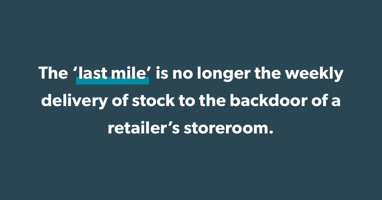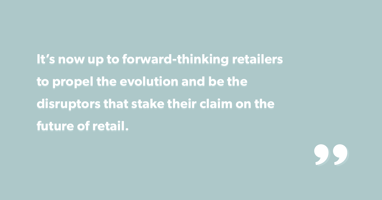Foot to the floor. That’s how we hit 2020 here at Sherpa. Steaming through our sixth year in...
Looking back and moving forward. The effects of the Coronavirus on online retail.
It’s all good, until it’s not.
Foot to the floor. Like many businesses, that’s how we hit 2020 at Sherpa. Steaming through our sixth year in business with a full tank of petrol and the windows down. But just a little further down the road, we’d take a detour that would make history.
COVID-19. It sounds like an exit you’d take somewhere along the M31, just outside of Sydney. But as we, the nation and the world can now attest, it doesn’t look like we’ll see the highway again anytime soon.
By the time it’s conquered, the now infamous Coronavirus will have left its mark on every aspect of the modern world. Few saw it coming, and those who did may not have anticipated its scale or the catastrophic effects it would have on the economy.
The vast number of Australians working from home throughout 2020 and various state and national lockdowns saw the ubiquitous remodelling of retail businesses of all sizes into home delivery outlets. But revamping an entire business in a matter of days with no prior warning isn’t easy, especially when your model is geared toward traditional strengths such as on-site customer service or overall shopping experience.
For a lot of retailers, demand from customers was still as high as ever, but getting products into their hands during lockdowns posed brand new challenges. Especially with no delivery fleet and the ever present instant gratification mindset of modern day consumers. The online retail customer doesn’t want things tomorrow or in 3 days, they want them now, and they’re willing to find a retailer who can fulfil that want. If you can’t do it, they’ll find someone who will.
Enter the gig-economy. The dynamic scalability of crowd-sourced fleets has enabled thousands of businesses across the country to adapt to these unprecedented changes with speed and efficiency. These contemporary fleets, unlike their traditional counterparts, can deliver any category of product at affordable rates in under an hour. This has meant businesses struggling to survive amidst the COVID-19 pandemic have been able to continue servicing their customer base with a quick and efficient pivot, rather than a revamp.
And so, hamstrung Aussie businesses have maintained forward momentum using the gig economy as their walking stick.
More prevalent than this, however, has been the revelatory nature of the global situation, which has opened the eyes of many businesses owners to the big wave brewing out the back; the on-demand requirements of the modern day consumer.
Learn from the past.
10 years ago, ordering a book online and receiving it in the mail a week later was revolutionary. At the time, this state of the art retail experience was seen as way ahead of the curve. Yet for traditional bookstores, no warning bells were sounded. No fears were sparked.
5 years ago having any hot meal delivered to your door within 30 minutes, for the same price as take-away, was excitingly novel. Yet there came no immediate retaliation from restaurants and fast-food chains.
Today, Sherpa can deliver online orders from Australian retail outlets to customers within 60 minutes. For the forward-thinking brands utilising services like this, convenience is the promise that separates them from competitors and drives brand loyalty amongst customers. For the brands who aren’t, sound the warning bell.
The reality is, brand loyalty, like all rapid advances, is tempered with WIFM – ‘What’s In It For Me’. Whether I need a bottle of wine, a dress to wear tonight, medication for my child or groceries for dinner, if a retailer can get me my products within an hour of me purchasing them online, then I am now loyal to that service, and thus to that retailer. And that experience will result in repeat and more frequent purchases.
Look to the future.
The Coronavirus Pandemic has had many lasting effects on Australian retail, but the biggest has perhaps been the pressing and holding of the fast forward button. Businesses, brands and, most importantly, customers have discovered that they can access absolutely everything they need from the comfort of their homes. These new expectations will soon become standard amongst consumers. Because once they have experienced the new, it’s very hard to go back to the old.
This gradual process is called ‘convenience creep’. Some retailers twigged with the advent of Click and Collect, but that has now proven to be just a cautious dip of the toe into the waters of complete customer fulfilment. Delivering what the customer needs in full is already happening, and it doesn’t involve drones or high-speed vacuum pipes linking your front door with the local shopping centre.
This is the evolution that, thanks to the Covid-19, has now become the standard. It’s up to forward-thinking retailers to propel the evolution and be the disruptors that stake their claim on the future of retail.
For now, the best advice seems to be the most cliched, and we leave you with it unashamedly.
‘It is not the strongest of the species that survives. Nor the most intelligent. It is the one that is most adaptable to change.’
– Charles Darwin


